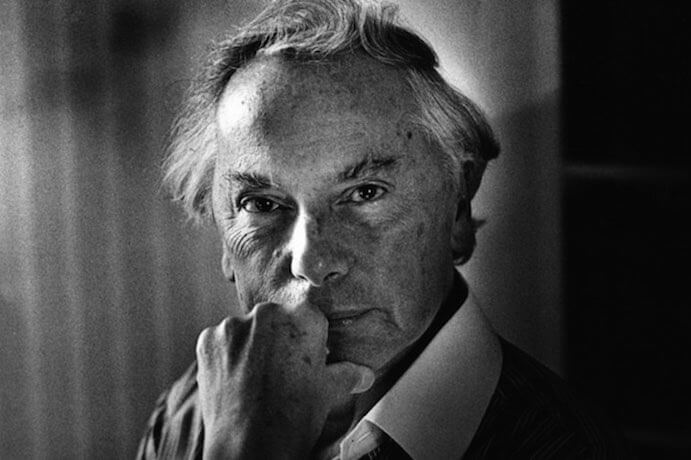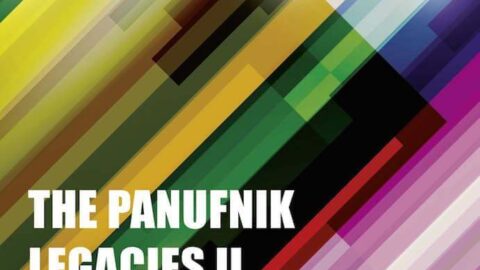Someone has probably coined a term for the style of music showcased on the London Symphony Orchestra’s new recording The Panufnik Legacies II. Perhaps pre-postorchestral neo-aural minimaximalism or something else that rolls off the tongue, or rather pushes the tongue in cheek. No matter the useless nomenclature, most of the eighteen young composers on the recording (the veteran Colin Matthews makes nineteen total contributors) write music that falls midway between two poles of contemporary composition. On one side, there are the fiery avant-gardes like Ashley Fure, who continually push instruments, forms, and sounds beyond our complacent expectations. Opposite are people like Nico Muhly, whose pieces reveal the nearness of the minimalism they follow in the wake of and the indie music they often contribute to. Both of these strands continue traditions of composition that attempt to push into unexplored realms.
The composers on The Panufnik Legacies II represent another hoary lineage, more interested in the mastery of existent styles than in innovating for the sake of innovating. Instead, they subtly push at boundaries within the orchestral tradition while still residing essentially inside it. The recording spotlights young composers who have taken part in the LSO’s Panufnik Composers Scheme. Begun in 2005 in association with Lady Camilla Panufnik in honor of her husband, the talented (and too little heard, especially in the US) composer Sir Andrzej Panufnik, the Scheme allows six composers a year the chance to work with the LSO to write a three-minute piece for the orchestra. This recording, the second to result from the Scheme, features the LSO under conductor François-Xavier Roth in nine pieces by Scheme alumni as well as the joint effort Panufnik Variations, for which Colin Matthews orchestrated a theme by Panufnik and contributed two variations, framing nine variations by graduates of the Scheme.

Unlike the avant-gardists or indie post-minimalists, these composers have no qualms recognizing and continuing a long orchestral past. Some reference the repetitions and clarity of minimalism and pop: Leo Chadburn explicitly rejects “convoluted” compositional techniques in his Brown Leather Sofa (2012), which consists primarily of a descending scale, while Aaron Parker’s four-part Captured (2012) rotates in hypnotic loops reminiscent of some electronic music. But for the most part, these pieces are echt classical orchestral works.
It’s clear that most of these composers have studied orchestration in depth, absorbing past examples, learning the idiosyncrasies of instruments, exploring the kaleidoscopic combinations possible with a modern orchestra. Despite the relative brevity of these pieces and variations—only one single work is over ten minutes, while most of the variations are two minutes—many of the composers are determined to use the whole orchestra, from piccolo to tuba, piano to xylophone, string harmonics to muted brass. They know the vast opportunities available to contemporary orchestral composers and seem keen to find their own unusual colors and make their own mark. There is little reduced orchestration, and a tendency towards taut sustained strings with hectic winds and twinkling atmospherics. Elizabeth Ogonek, with as though birds (2013), and Matthew Kaner, The Calligrapher’s Manuscript (2011), come across as most confident in their orchestration, lending a pleasing originality to their works.
There is a common approach to texture and form as well, again perhaps typical of this historical moment in orchestral music. Multiple strata of sound heave against one another in a sort of counterpoint; they both complement and abrade each other. Strings float, winds jerk and bubble, brass babbles, percussion clatters, often in repetitive patterns. These layers are often built from a recognizable motif, for example oscillations and a leaping melody in Alastair Putt’s Spiral (2011), an Arabic-tinged call and an oozy motto in Bushra El-Turk’s Tmesis (2012), or a nervous chattering in Duncan Ward’s P-p-paranoia (2011). Complex ideas drive many pieces, as revealed in liner notes, but structures have an organicism to them that makes them easy to follow.

Dark, rich harmonies are favored, atonal but not blindingly so: see Kim B. Ashton’s Spindrift (2013), which specifically references the orchestral lineage through Britten and Debussy quotes. Many of the Panufnik Variations are especially tortured in their harmony and texture, as probably inspired by the austere theme. But such a multi-composer project, while admirable, ends up with a certain sameness since the theme suggests a certain mood and treatment. Transitions can also be awkward, with abrupt shifts from one style to another, especially from Christopher Mayo’s eerie variation to Toby Young’s bright, affirmative one.
The Panufnik Legacies II certainly contains considerable talent and highlights an area of contemporary composition easily overlooked by those who favor the newness of the avant-garde or composers like Muhly. But there is great music in the middle too. Innovation is wonderful and important, but novelty is not always quality.
























